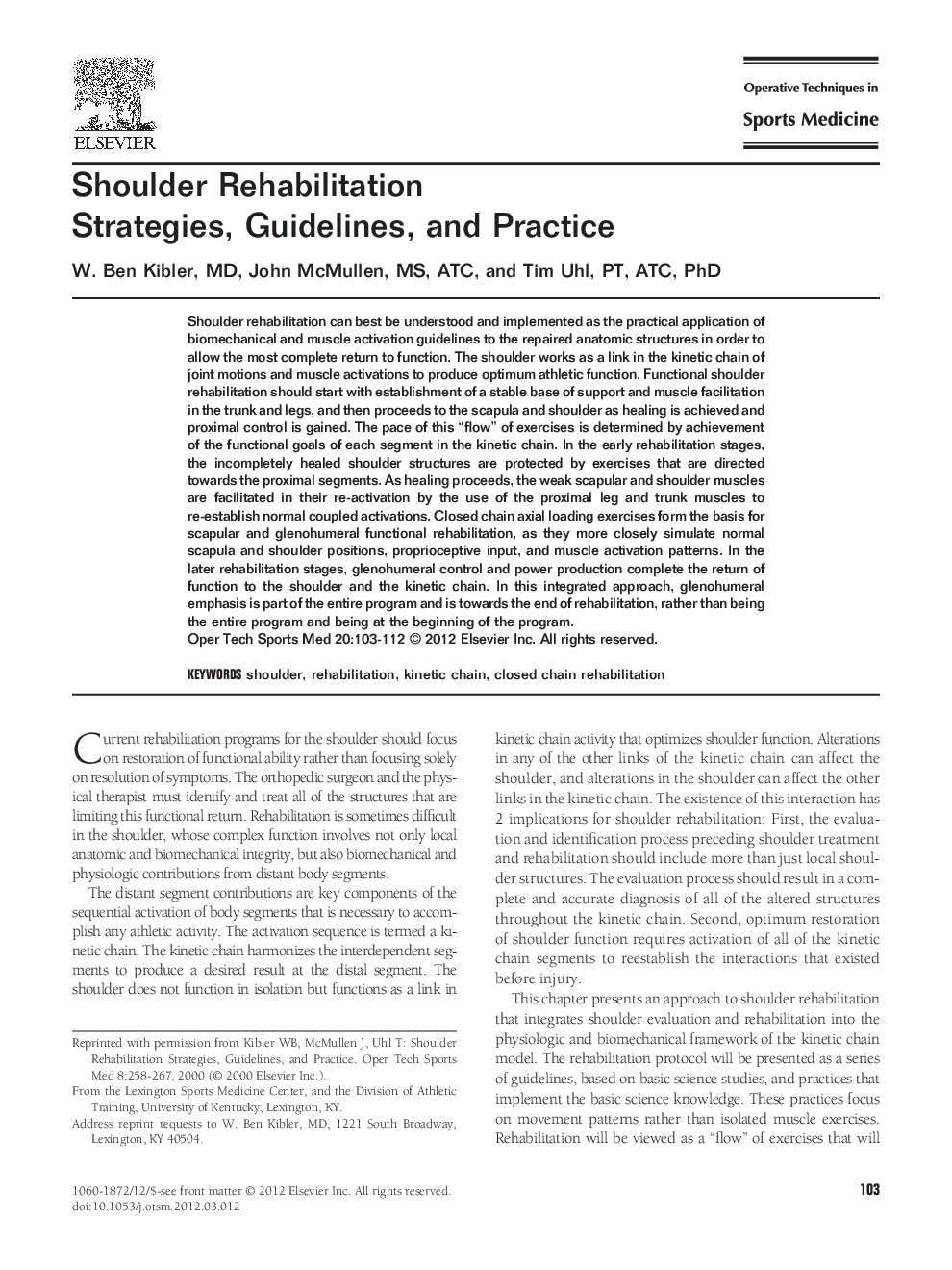| Article ID | Journal | Published Year | Pages | File Type |
|---|---|---|---|---|
| 4079697 | Operative Techniques in Sports Medicine | 2012 | 10 Pages |
Shoulder rehabilitation can best be understood and implemented as the practical application of biomechanical and muscle activation guidelines to the repaired anatomic structures in order to allow the most complete return to function. The shoulder works as a link in the kinetic chain of joint motions and muscle activations to produce optimum athletic function. Functional shoulder rehabilitation should start with establishment of a stable base of support and muscle facilitation in the trunk and legs, and then proceeds to the scapula and shoulder as healing is achieved and proximal control is gained. The pace of this “flow” of exercises is determined by achievement of the functional goals of each segment in the kinetic chain. In the early rehabilitation stages, the incompletely healed shoulder structures are protected by exercises that are directed towards the proximal segments. As healing proceeds, the weak scapular and shoulder muscles are facilitated in their re-activation by the use of the proximal leg and trunk muscles to re-establish normal coupled activations. Closed chain axial loading exercises form the basis for scapular and glenohumeral functional rehabilitation, as they more closely simulate normal scapula and shoulder positions, proprioceptive input, and muscle activation patterns. In the later rehabilitation stages, glenohumeral control and power production complete the return of function to the shoulder and the kinetic chain. In this integrated approach, glenohumeral emphasis is part of the entire program and is towards the end of rehabilitation, rather than being the entire program and being at the beginning of the program.
